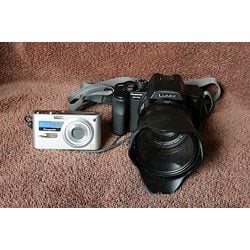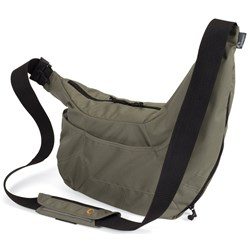We spent more than 16 hours researching and testing vlogging cameras and equipment to find the best. But before you rush to spend hundreds or thousands on new gear, think about that all you should get started is your smartphone you currently have, and an affordable, flexible tripod that works for phones and cameras alike.
 |
Joby GorillaPod 1K Kit
For first-time vloggers This is mild enough to take everywhere, but powerful enough for your heaviest smartphone and a number of cameras. |
The best camera is the one you have with you, and for most people, that is a smartphone. Most modern phones are already take stabilized, high-quality footage in well-lit conditions. It is a terrific way to learn more about the practice of shooting before stepping up to a dedicated camera. And unlike with dedicated cameras, the editing, adding any effects and filters, and sharing may all be accomplished directly from your cell phone with no additional transfers required.
Whatever camera you purchase (if and if you decide you need one), Joby’s GorillaPod 1K Kit and the Square Jellyfish Metal Spring Tripod Mount is going to be crucial tools in your vlogging journeys. The 1K has legs which may wrap around just about any tree branch or road sign post to assist you get a steady shot wherever you’re. And since it can encourage 2.2 pounds, it is sturdy enough to adapt mirrorless camera setups capable of shooting DSLR-quality footage down the road.
Sony’s RX100 cameras are very popular amongst vloggers, prized for being little and supplying exceptional video quality. The RX100 Mark IV includes the capability to capture in slow motion or at 4K resolution while at the same time making good 1080p footage. The facial recognition enables the camera see your face and prioritize it for attention. The LCD screen can divide 180 degrees so you can see yourself while recording, and Wi-Fi enables you to use a smartphone as your remote controller. This is particularly useful if paired with a GorillaPod 1K Kit. The only big downside that may be a dealbreaker for some is its lack of mic input, so if audio quality is a priority, you ought to take a look to our other selections.
If you’d like the capability to add specialty lenses for your own kit in the future, think about a mirrorless camera before leaping to a DSLR. Sony’s a6300 and its kit lens function as well as a midrange DSLR (thanks to its high APS-C sensor), but at roughly half of the size and weight of a comparable DSLR, it’s a lot more portable. Face recognition enables the camera identify and track your face to keep it in focus. Its only major defect is that the display doesn’t flip up far enough for you to see it into selfie mode. But you may use the Wi-Fi connection along with a smartphone app to remotely control the camera and make sure that your face is in the framework.
We advocate using a GorillaPod 1K Kit to maintain the camera up in the air or attach it to a post or railing, or just to stand up to a surface. If you want to measure the audio quality of your vlogs, get the Sony ECM-GZ1M. It plugs into almost any Sony camera using a Multi Interface Shoe which makes your voice louder and better in the sound mix compared to ambient noise in which you’re shooting. Despite being small, the cheap Sony mic provides comparable recording quality to bigger and more expensive prosumer-style Rode microphones.
Most people probably don’t need a DSLR for vlogging, especially as a mirrorless or compact camera offers more features, 4K recording, and greater portability in a much lower price. However, if battery life is the top priority, or if you have your heart set on a DSLR, Canon’s 80D is the very best value for video. Compact and mirrorless cameras quit after about 60 to 80 minutes of shooting on a fully charged battery, but the 80D gets just about double that. Its Dual Pixel autofocus is often quicker and more precise for shooting video compared to the AF in other DSLRs, as it works while shooting the touchscreen activated in live-view mode, thus changing focus is as simple as tapping the screen, exactly like a smartphone. Furthermore, its articulated touchscreen can face forward so that you can see yourself while shooting. If you prefer remote control, you could also opt to utilize Wi-Fi and a phone program to frame the shot along with start and stop recording. However, it lacks 4K recording capacities. (As of this writing, the only Canon DSLRs that do 4K cost upwards of $3,000.)
At 2.6 pounds with a kit lens, you will need to update to the GorillaPod 3K Kit to encourage the 80D’s weight. (The 1K we recommend for the other cameras can’t encourage its 2.6-pound weight.) If you want to measure the sound on your vlogs, the Rode VideoMic Go directional mic can keep the attention of the sound on you. It’s affordable to get a directional mic and also doesn’t require its own power supply, so you can plug it into the 80D’s mic input and be all set.
The cameras in this guide are aimed at capturing traditional video footage, but we also have recommendations for a number of other cameras which you might find helpful for supplemental footage. A action camera is great for capturing underwater or point of perspective scenes. And a 360 camera can record interactive shots that enable audiences to explore every angle of your journey.





